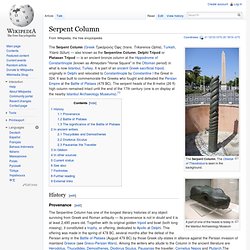

Megalithic Buildings with Energy Regulation. Megalithic Bildings with Energy Regulation by Miroslav Provod Construction of megalithic buildings with regulation of energy ensued probably from finding that restoring of health by means of menhirs, dolmens, cromlechs and clay mounds could have been exploited only in time intervals, whereon was need to wait sometimes for a long time. 5:1 After these things, there was a feast of the Jews, and Jesus went up to Jerusalem.5:2 Now in Jerusalem by the sheep gate, there is a pool,which is called in Hebrew, “Bethesda,” having five porches.5:3 In these lay a great multitude of those who weresick, blind, lame, or paralyzed, waiting for the moving of the water;5:4 for an angel of the Lord went down at certain times into the pool, and stirred up the water.

Jerusalem pool was not placed in a dried out creek accidentally. If water traverses all the time, it was not disposable “a certain time” for its modification. Osireion Osireion ( Image Credit ) Prehistory in India: Mohedjo-daro. Pyramids of Glass Found in the Bermuda Triangle - New Earth Daily - Nightly. Yhwh truth. Origins of Jewi-Christian-Muslim monotheism. BIZARRE. How Old is the Sphinx? Ley-lines. There are several developed theories on the purpose of ley-lines, many of which offer valid potential; something which in itself illustrates the complexity of unravelling the myriad of alignments from several millennia of activity.

It is likely that ley-lines are a product of different elements from several of the following theories, being created at different times, for different purposes. The following examples are the current contenders for explaining how such a dedication to straight-lines has led mankind its present position. It is important to recognise the distinction between ley-lines and geometric alignments. Spirit ways and Death roads - (Funerary paths): Although there is little direct evidence for 'religious' worship in the modern sense of the word at megalithic sites, there is certainly evidence that funerary rites were involved at several important locations (some of which may be classed a secondary use).
Feng shui - (Earths Magnetic Field) Astronomical Alignments: Qutb complex. Coordinates:

Iron pillar of Delhi. The iron pillar of Delhi The Iron Pillar located in Delhi, India, is a 7 m (23 ft) column in the Qutb complex, notable for the rust-resistant composition of the metals used in its construction.

The pillar has attracted the attention of archaeologists and metallurgists and has been called "a testament to the skill of ancient Indian blacksmiths" because of its high resistance to corrosion.[1] The corrosion resistance results from an even layer of crystalline iron hydrogen phosphate forming on the high phosphorus content iron, which serves to protect it from the effects of the local Delhi climate.[2] Description. Serpent Column. A part of one of the heads is today in the Istanbul Archaeology Museum The Serpent Column (Greek Τρικάρηνος Όφις (trans.

Trikarenos Ophis), Turkish, Yılanlı Sütun) — also known as the Serpentine Column, Delphi Tripod or Plataean Tripod — is an ancient bronze column at the Hippodrome of Constantinople (known as Atmeydanı "Horse Square" in the Ottoman period) in what is now Istanbul, Turkey. It is part of an ancient Greek sacrificial tripod, originally in Delphi and relocated to Constantinople by Constantine I the Great in 324. It was built to commemorate the Greeks who fought and defeated the Persian Empire at the Battle of Plataea (479 BC). Heliodorus pillar. The dedication of the Heliodorus pillar was made by Heliodorus, ambassador of the Indo-Greek king Antialcidas (here depicted on one of his coins).

The pillar was surmounted by a sculpture of Garuda and was apparently dedicated by Heliodorus to the god Vāsudeva in front of the temple of Vāsudeva. Inscriptions[edit] Trilithon. A trilithon (or trilith) is a structure consisting of two large vertical stones (posts) supporting a third stone set horizontally across the top (lintel).

It is commonly used in the context of megalithic monuments. The most famous trilithons are those of Stonehenge in England and those found in the Megalithic temples of Malta, both of which are UNESCO World Heritage Sites. The word trilithon is derived from the Greek "having three stones" (τρι-/tri- 'three' + λίθος/lithos 'stone') and was first used by William Stukeley. Dolmen. A dolmen, also known as a portal tomb, portal grave or quoit, is a type of single-chamber megalithic tomb, usually consisting of three or more upright stones supporting a large flat horizontal capstone (table), although there are also more complex variants.

Most date from the early Neolithic period (4000 to 3000 BC). Dolmens were typically covered with earth or smaller stones to form a barrow. In many instances, that covering has weathered away, leaving only the stone "skeleton" of the burial mound intact. It remains unclear when, why, and by whom the earliest dolmens were made. The oldest known dolmens are in Western Europe, where they were set in place around 7000 years ago. Etymology[edit] The word dolmen has a confused history. Types[edit] Category:Ziggurats. Menhir. Large menhir located between Millstreet and Ballinagree, County Cork, Ireland.

A menhir (French, from Middle Breton: men, "stone" and hir, "long"[1]), standing stone, orthostat, or lith is a large upright standing stone. Menhirs may be found singly as monoliths, or as part of a group of similar stones. Their size can vary considerably, but their shape is generally uneven and squared, often tapering towards the top. Menhirs are widely distributed across Europe, Africa and Asia, but are most numerous in Western Europe; in particular in Ireland, Great Britain and Brittany.
There are about 50,000 megaliths in these areas,[2] while there are 1,200 menhirs in northwest France alone.[3] Standing stones are usually difficult to date, but pottery found underneath some in Atlantic Europe connects them with the Beaker people. Some menhirs have been raised next to buildings that often have an early or current religious significance. History[edit] Many menhirs are carved with megalithic art.